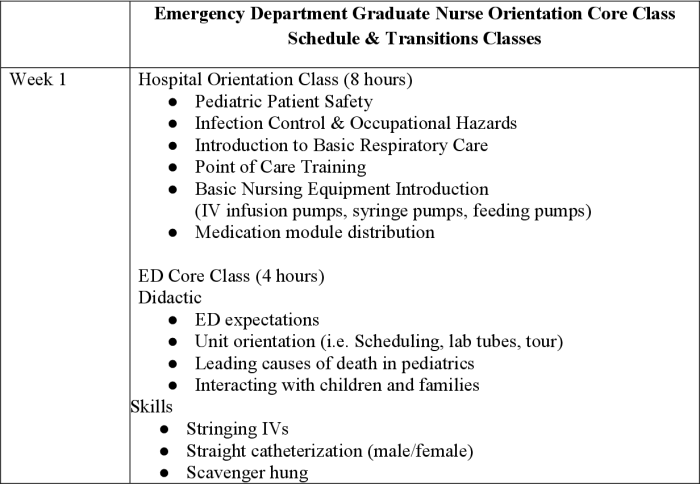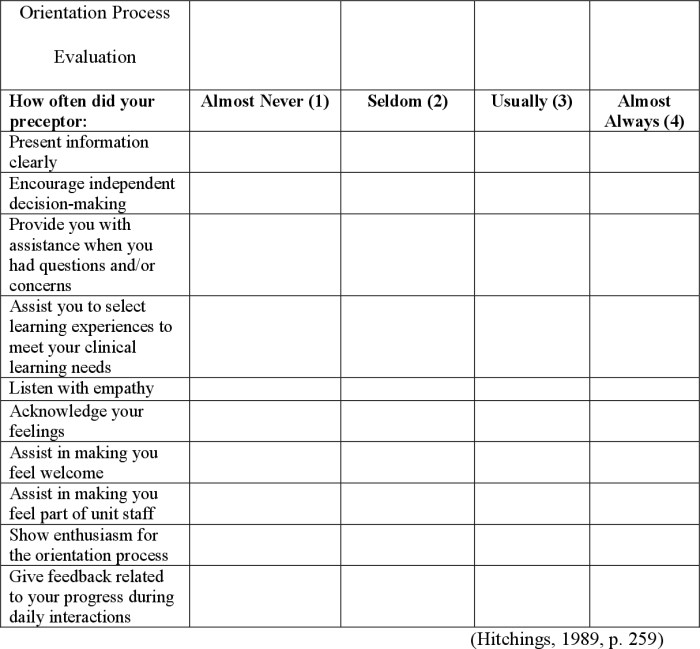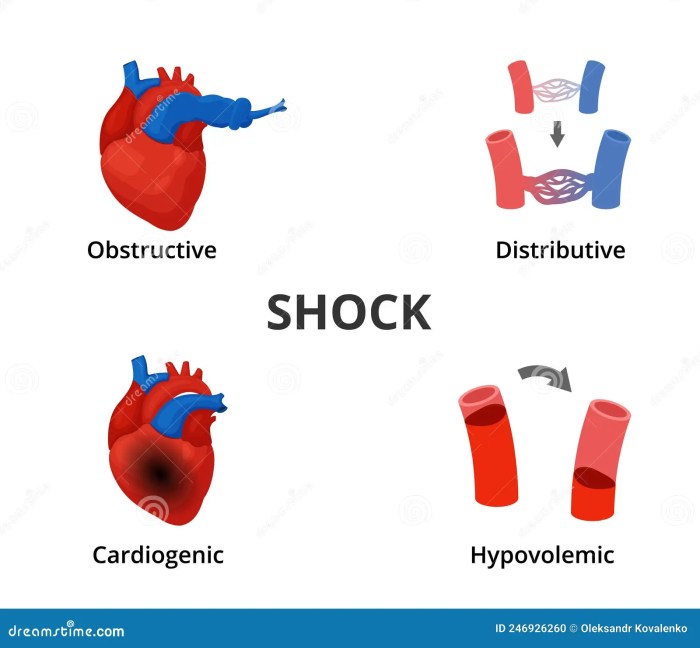Emergency nursing orientation 3.0 shock emergencies – Emergency nursing orientation 3.0: Shock emergencies is a comprehensive guide for nurses on the front lines of managing shock emergencies. This guide provides an in-depth understanding of the pathophysiology, clinical manifestations, and management of shock, empowering nurses to provide timely and effective care to critically ill patients.
Nurses play a vital role in the assessment, monitoring, and management of patients with shock. They are responsible for recognizing the signs and symptoms of shock, initiating appropriate interventions, and collaborating with the interdisciplinary team to provide optimal care. This guide provides nurses with the knowledge and skills necessary to effectively manage shock emergencies and improve patient outcomes.
Shock Emergencies in Emergency Nursing Orientation 3.0

Shock is a life-threatening condition characterized by inadequate tissue perfusion. It can be caused by a variety of factors, including hypovolemia, sepsis, cardiogenic failure, and anaphylaxis.
The clinical manifestations of shock vary depending on the underlying cause. However, common signs and symptoms include hypotension, tachycardia, tachypnea, and oliguria.
The management of shock involves addressing the underlying cause and providing supportive care. Fluid resuscitation is the cornerstone of treatment for hypovolemic shock. Vasopressors may be necessary to improve blood pressure in patients with cardiogenic shock or septic shock.
Nursing Assessment and Interventions
The nursing assessment of patients with shock includes a thorough history and physical examination. The nurse should assess the patient’s vital signs, skin color and temperature, and mental status.
The nurse should also identify the potential cause of shock and monitor the patient’s response to treatment.
Nursing interventions for managing shock include monitoring vital signs, administering fluids, and providing emotional support.
Collaborative Care in Shock Emergencies
The management of shock emergencies requires a collaborative effort between nurses and other healthcare providers. The interdisciplinary team may include physicians, respiratory therapists, and pharmacists.
Nurses play a vital role in coordinating care and communicating with other members of the team.
Nurses can also access resources such as the Shock Index Calculator and the Early Warning Score to help them identify and manage patients at risk for shock.
Quality Improvement in Shock Management, Emergency nursing orientation 3.0 shock emergencies
The quality of care for patients with shock can be improved by implementing evidence-based practices and using quality improvement tools.
Nurses can participate in quality improvement initiatives by collecting data, analyzing trends, and developing and implementing new protocols.
Patient Education and Discharge Planning
Patient education is an important part of shock management. Nurses should teach patients about the signs and symptoms of shock, the importance of seeking medical attention, and the self-care measures they can take to prevent shock.
The discharge planning process for patients with shock should include a review of the patient’s condition, medications, and follow-up appointments.
FAQ Overview: Emergency Nursing Orientation 3.0 Shock Emergencies
What are the common types of shock?
The common types of shock include hypovolemic shock, cardiogenic shock, septic shock, and anaphylactic shock.
What are the key nursing interventions for managing shock?
Key nursing interventions for managing shock include monitoring vital signs, administering fluids, providing oxygen therapy, and administering vasopressors as prescribed.
What is the role of the interdisciplinary team in managing shock emergencies?
The interdisciplinary team plays a crucial role in managing shock emergencies, with each member contributing their expertise to provide comprehensive care. This team typically includes nurses, physicians, respiratory therapists, and pharmacists.

